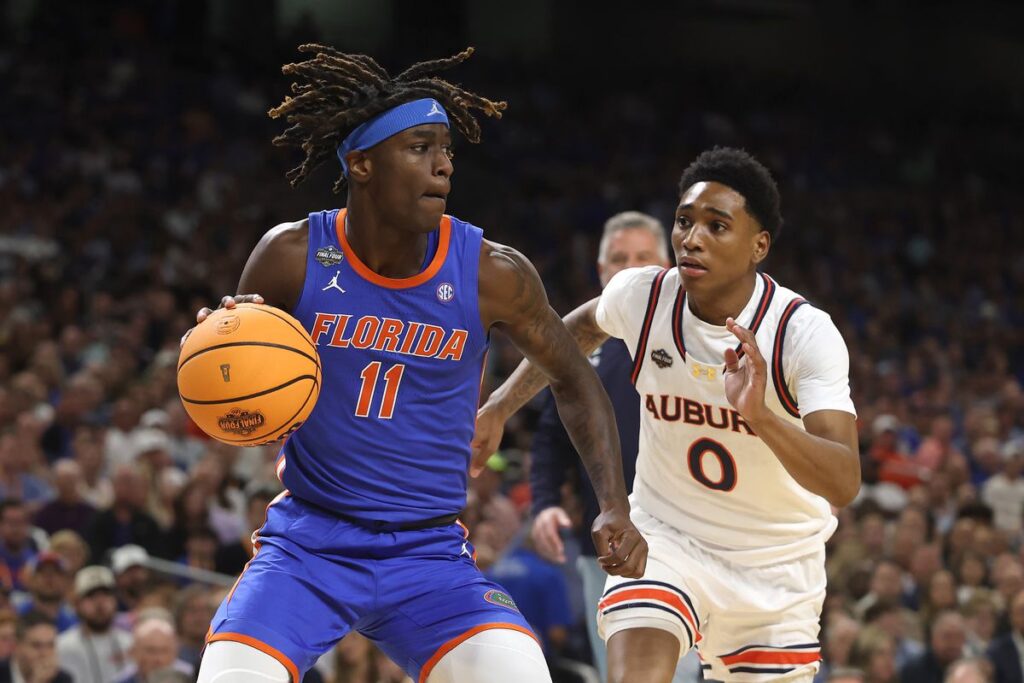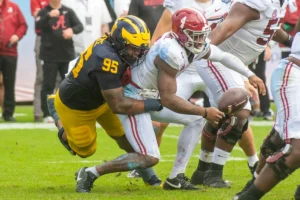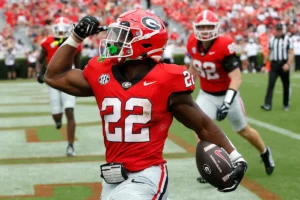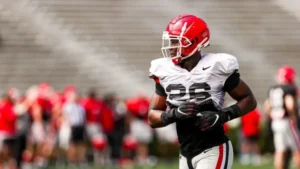
The Billion-Dollar Backcourt: Two Programs Shatter Spending Records in the Wild West of the Men’s Basketball Transfer Portal
The landscape of college basketball recruiting has been irrevocably altered. Forget subtle recruitment dinners and persuasive coaching pitches alone. In the high-stakes arena of the men’s transfer portal, a new currency reigns supreme: cold, hard cash, fueled by the burgeoning Name, Image, and Likeness (NIL) opportunities. While many programs navigate this evolving terrain with cautious optimism and strategic investments, two titans have emerged, shattering previous spending paradigms and leaving the rest of the field in their financial wake. The numbers aren’t just eye-popping; they’re frankly, wild, signaling a potential arms race with unforeseen consequences for the sport’s competitive balance and long-term sustainability.
As the April 22nd deadline for entering the transfer portal looms, the sheer volume of player movement is staggering. For the fourth consecutive year, the number of men’s basketball players seeking new collegiate homes has reached a record high, with over 2,300 athletes entering the fray this cycle alone. This represents a seismic shift from the pre-portal era, where players had significantly less freedom of movement. Coupled with the relatively recent advent of NIL, which allows athletes to earn compensation for endorsements and other commercial activities, the transfer portal has become akin to an unrestricted free agency period in professional sports.
Into this environment of unprecedented player mobility and financial opportunity stride our two mystery programs. While specific team names remain closely guarded secrets within coaching circles and recruiting databases, the sheer scale of their financial commitments has become the stuff of legend. Whispers from high-major coaches and recruiting insiders paint a picture of budgets soaring into the eight-figure range, a previously unimaginable territory in college basketball. One exasperated high-major coach described the current situation as an “absolute cesspool,” lamenting the lack of regulation and guidance in the NIL era.
To put this spending into perspective, consider that just a few short years ago, a deal worth $800,000 over two years was considered a landmark NIL agreement. Now, that figure barely registers as a headline. The going rate for even decent talent has inflated exponentially, with mid-major players who averaged fewer than ten points per game on non-NCAA Tournament teams commanding sums in the hundreds of thousands of dollars for a single season. This dramatic escalation is fueled by the intense competition for proven talent in the transfer portal, as programs increasingly prioritize immediate success over long-term development through traditional high school recruiting.
Sources indicate that at least eight programs are operating with roster budgets exceeding $10 million for the upcoming season. However, our two unnamed behemoths have seemingly blown past even this lofty threshold. While precise figures are elusive, the consensus among those in the know suggests that these two schools are each prepared to invest well north of $15 million, and possibly even approaching $20 million, solely on acquiring and retaining players through a combination of NIL deals and potential revenue sharing agreements that may arise from ongoing NCAA settlements.
What exactly does a $15-20 million basketball roster look like in the transfer portal era? It likely involves securing multiple high-profile transfers, players who were All-Conference performers or key contributors on successful teams at their previous institutions. These athletes, often with significant playing experience and proven production, command the highest NIL payouts. A single elite transfer can easily command an annual compensation package in the $2-3 million range, and in some exceptional cases, even more.
Beyond the top-tier targets, these massive budgets allow these two programs to aggressively pursue and secure high-potential players with remaining eligibility, essentially buying out their contracts or enticing them with guaranteed significant roles and lucrative NIL opportunities. This creates a significant advantage over programs with more limited financial resources, who are forced to be more selective and often miss out on the most coveted transfer targets.
The implications of this unprecedented spending are far-reaching. Firstly, it raises serious questions about competitive balance within college basketball. Can programs operating on budgets a fraction of this size realistically compete for championships when their wealthier counterparts can essentially cherry-pick the best available talent from across the country? While coaching acumen and team chemistry remain vital, the ability to acquire a roster stacked with proven, high-level players undeniably provides a significant advantage.
Secondly, this level of financial investment puts immense pressure on these programs to deliver immediate results. A $15-20 million roster carries championship expectations. Any season that falls short of a deep NCAA Tournament run will be viewed as a significant failure, potentially leading to coaching changes and further upheaval. This win-at-all-costs mentality could further exacerbate the transfer portal frenzy, as programs become even more trigger-happy in overhauling their rosters in pursuit of elusive success.
Furthermore, the sustainability of this spending model remains a significant concern. These exorbitant budgets are largely fueled by wealthy boosters and NIL collectives. The long-term willingness of these entities to continue underwriting such massive expenditures is uncertain, particularly if on-court success doesn’t materialize. Any significant pullback in funding could leave these programs in a precarious position, potentially facing the need for drastic roster restructuring and a return to more fiscally conservative approaches.
The transfer portal, initially intended to provide players with greater flexibility and opportunity, has inadvertently become a marketplace driven by the highest bidder. While athletes undoubtedly deserve to benefit from their name, image, and likeness, the current lack of regulation and the emergence of these super-spending programs threaten to create a two-tiered system within college basketball, where a select few wealthy programs operate in a different financial stratosphere than the vast majority of their peers.
The NCAA faces a significant challenge in addressing these issues. Finding a balance between allowing athletes to capitalize on their NIL rights and ensuring a level playing field for all programs will require thoughtful and comprehensive reforms. Discussions around potential salary caps, standardized contract frameworks, and clearer guidelines for NIL collectives are gaining traction, but implementing meaningful change in the current environment of legal challenges and competing interests will be a complex and arduous process.
In the meantime, the wild spending in the men’s basketball transfer portal continues, with our two mystery programs leading the charge into uncharted financial territory. The numbers are indeed wild, and the long-term consequences for the sport remain to be seen. One thing is certain: the era of college basketball as we once knew it has undergone a profound and potentially irreversible transformation. The billion-dollar backcourt may be a slight exaggeration for a single team, but the cumulative spending power being unleashed by these top programs signals a new era where financial might plays an increasingly dominant role in shaping the competitive landscape. The question now is whether this trend will ultimately elevate the sport or lead to its fragmentation.





